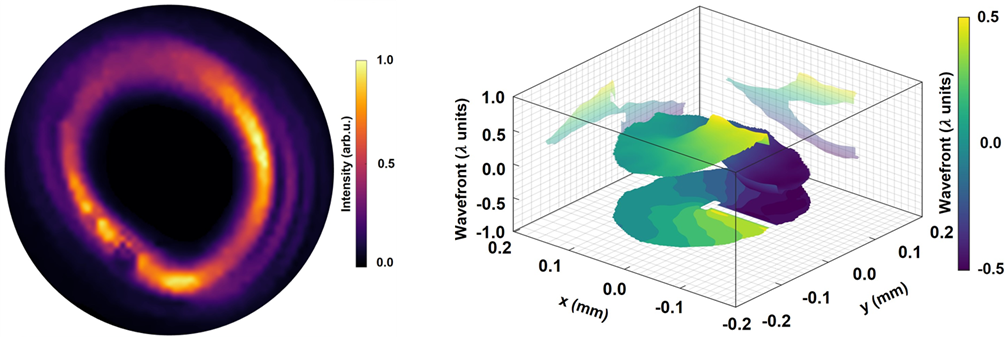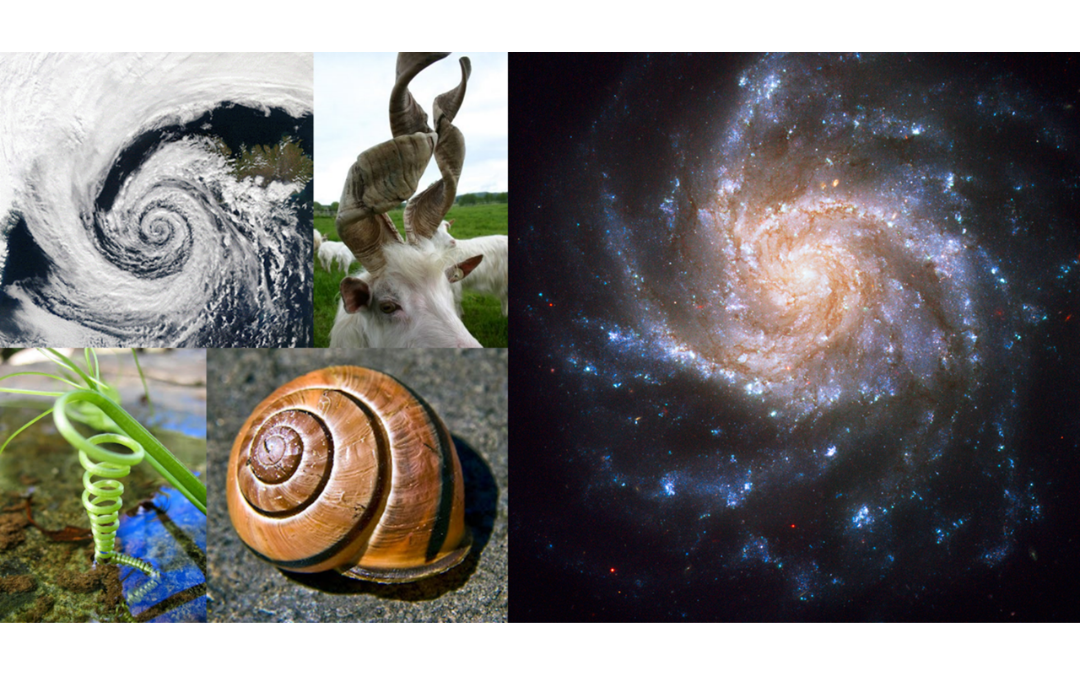Optical Characterization – Spirals are ubiquitous in nature; why should laser beams be any different?
Orbital angular momentum (OAM) beams have attracted considerable interest in recent years due to their unique properties [1]: these beams possess a helical wavefront twisting around their propagation axis. This very specific characteristic encodes more degrees of freedom than classical beams and opens up new horizons in numerous applications with an incredible impact on our daily lives [2]:
> Optical communications > OAM beams offer increased information-carrying capacity and improved resistance to atmospheric turbulence, making them suitable for high-capacity optical communication systems with extended communication ranges.
> Quantum Information Processing > the OAM states of photons have been utilized to encode and transmit quantum information, contributing to the development of quantum communication protocols.
> Medical imaging and biophotonics > OAM beams can enhance the resolution and sensitivity of imaging techniques, enabling improved diagnostics and biomedical research.
> Optical manipulation > OAM beams have been used for optical trapping and tweezing of microscopic particles, enabling precise manipulation in biological and nanoscale systems.
Over time, an extensive array of techniques has been developed to produce OAM beams [3]. Nevertheless, their comprehensive characterization continues to present several challenges. To fully utilize the numerous applications provided by OAM beams, it is essential to accurately determine their state. Consequently, suitable metrology and optical characterization techniques are mandatory.
But many of the commonly used methods for optically characterizing OAM beams either cannot retrieve their amplitude and phase simultaneously or require multi-shot acquisitions, which are susceptible to shot-to-shot fluctuations and strict beam stability requirements.
Wavefront sensing-based optical characterization
In contrast, Shack-Hartmann and Hartmann wavefront sensing methods solve these challenges, providing the opportunity for single-shot, simultaneous detection of amplitude and phase, over a wide spectral range from hard X-Rays (HASO HXR) to IR (HASO SWIR). This combined information is of the utmost importance as it enables more modes of OAM beams to be determined, which is crucial to exploiting their full potential.
Despite the emergence of various techniques for synthesizing OAM beams, their detection, especially in terms of single-shot amplitude, wavefront, and modal content characterization, is non-trivial. Imagine Optic’s wavefront-sensing solutions have demonstrated the ability for single-shot complete spatial amplitude and wavefront characterization of ultrashort OAM beams both:
in near-infrared [A. K. Pandey et al., Sensors 2022, 22, 132]
in extreme-ultraviolet (EUV) spectral range [A. K Pandey et al., Proc. SPIE 11886, International Conference on X-Ray Lasers 2020, 118860L].
Indeed, wavefront-sensing-based optical characterization of the spatial amplitude and phase has enabled retrieving the angular momentum spectra and complete modal composition for near-infrared and EUV helical beams [F. Sanson, A. K. Pandey, et al., Opt. Lett. 45, 4790-4793, 2020] exhibiting extremely high topological charge [A. K. Pandey et al., ACS Photonics 2022, 9, 3, 944–951; A. K. Pandey et al., Eur. Phys. J. Spec. Top. (2022)].

Left: single-shot intensity map of femtosecond EUV vortex beam characterized using Imagine Optic’s HASO EUV. Right: single-shot characterization of the twisted helical wavefront of femtosecond near-infrared vortex light using Imagine Optic’s HASO4 FIRST.
One step further
It is possible to push further the optical characterization with Imagine Optic’s HASO Multispectral, the first-ever spectrally-resolved wavefront sensor, which allows wavefront measurements in the 550 – 1000 nm spectral range with a spectral resolution of 1nm [in Laser Congress 2019 (ASSL, LAC, LS&C), OSA Technical Digest 2019, paper JM5A.30]. Leveraging this ability, the HASO Multispectral opens the possibility of spectrally-resolved complete spatial characterization of the broadband OAM beams, even in the few-cycle regime.
Imagine Optic wavefront sensors represent a commercially available, turnkey metrology solution which avoids customers having to design and maintain complex setups and lets them focus on the science.
Whether or not you’re looking for spirals anywhere in nature, we’ll be happy to discuss with you what solution best suits your needs. We have suitable tools and expertise in OAM beam metrology, Fabrice Sanson, Ph.D. and Alok Kumar Pandey, Ph.D in optical characterization. Reach us at contact@imagine-optic.com.
References
[1] Adv. Opt. Photon., 3(2):161–204, 2011
[2] Light Sci. Appl. 8(1):90, 2019; Photon. News, 31(6):24–31, 2020; J. Phys. Photonics 3, 022007, 2021
[3] Nanophotonics 7, 1533–1556, 2018; Light Sci. Appl. 8(1):90, 2019

